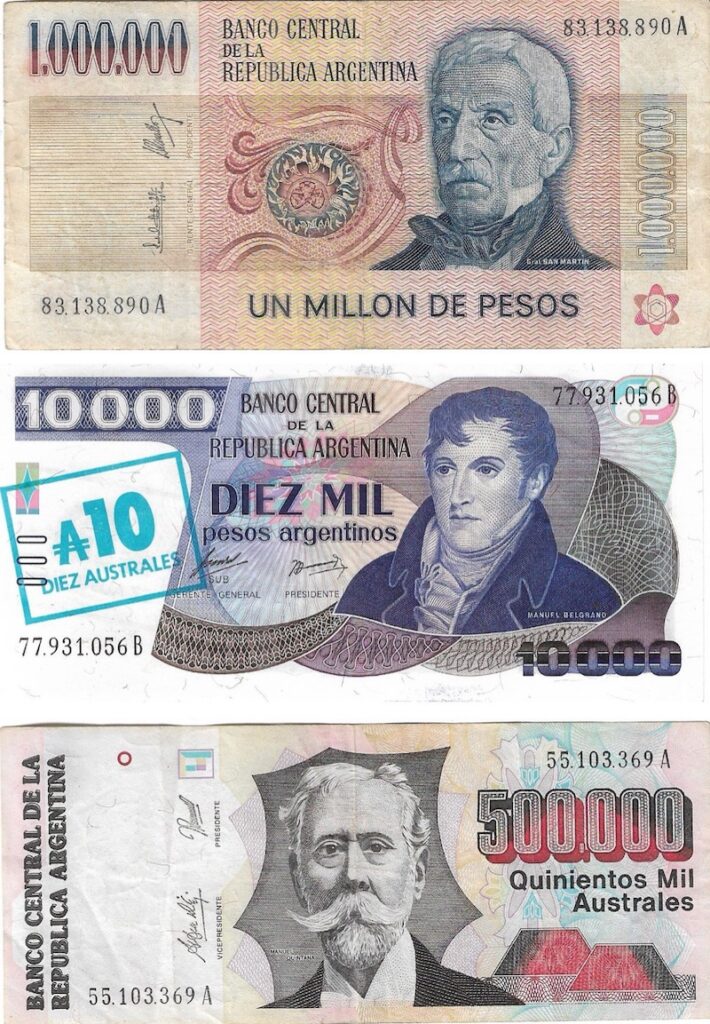Argentina’s New Political Currency – OpEd
By Amit Bhandari
Argentina’s President Javier Milei has been described by Leftist media in colorful terms as ‘madman’, ‘far-right’, ‘Argentina’s Trump’, and similar adjectives.
While global media may disapprove of Milei, it is understandable why Argentinians voted in an outsider who wanted to shut down the Central Bank and use the U.S. dollar as currency. One of his first big moves has been to devalue the Argentine Peso by over 50% against the U.S. dollar to bring the exchange rate in line with reality – a move described by external observers as shock therapy[1].
Prior to the devaluation, the market rate of the U.S. dollar to the Argentinian peso was 900, while the official rate was 360 pesos to the dollar. Inflation currently stands at 135% and GDP has fallen by 2.5% in 2023[2]. These are signs of economic failure.
However, these problems are not new. This movie has played repeatedly in Argentina (and the rest of South America) in the past half-century. The attached image shows three different high denomination notes of three different currencies, all from Argentina, all within the span of a single decade – the 1980s.
It is hard to grasp for those who have experienced this first-hand. For instance, the Indian rupee in its present form can be traced back to 1835. Predictability is a must for individuals and businesses, whether it is for retirement planning or starting a new manufacturing plant. Such planning can stretch decades into the future: it is not uncommon for young professionals in their thirties to be saving for their retirement at 60s and the long retirement thereafter. Then suddenly a horrible scenario when everything a professional has worked for/saved during their career suddenly becomes worthless due to hyperinflation. And imagine this happening repeatedly.
Most associate hyperinflation with Germany of 1920s, but it continues to be depressingly common even today. Venezuela over the past two decades, Zimbabwe in 2008, Russia, and most of Eastern Europe after 1992 have all witnessed hyperinflation, where prices rise by 50% within a month. Mostly, hyperinflation is caused by a government that spends more than what it receives from taxes, and resorts to printing money to pay its bills. Left uncontrolled, hyperinflation ensues, with prices of goods and services moving up daily. Savers suffer, and any kind of forward-looking planning becomes impossible.
During the 1980s, Latin America – especially Argentina, Brazil, Venezuela and the other smaller economies like Bolivia and Peru – all had repeated rounds of hyperinflation. TGovernments would print ever higher denomination notes to meet its expenses, the old currency would become worthless in a matter of months, then three zeroes (sometimes six zeroes) would be lopped off and new currency would be brought in. From 1980 to 1991, Argentina went through four different currencies (view attached image). Brazil also ran through multiple currencies in the same period.
Many countries which have witnessed hyperinflation tend to be repeat offenders. Venezuela, Zimbabwe, and Turkey have all come out with new currencies since 2000 And are likely to need a new currency soon, given sustained high inflation.
Unless policymakers change, disastrous policies are unlikely to change on their own. Most of South America has left the cycle of hyperinflation behind. With an outsider like Milei in the saddle, Argentina, the second-largest economy in the continent, may finally have the opportunity to break from the past.
- About the author: Amit Bhandari is Senior Fellow for Energy, Investment and Connectivity, Gateway House.
- Source: This article was written for Gateway House: Indian Council on Global Relations.
References


